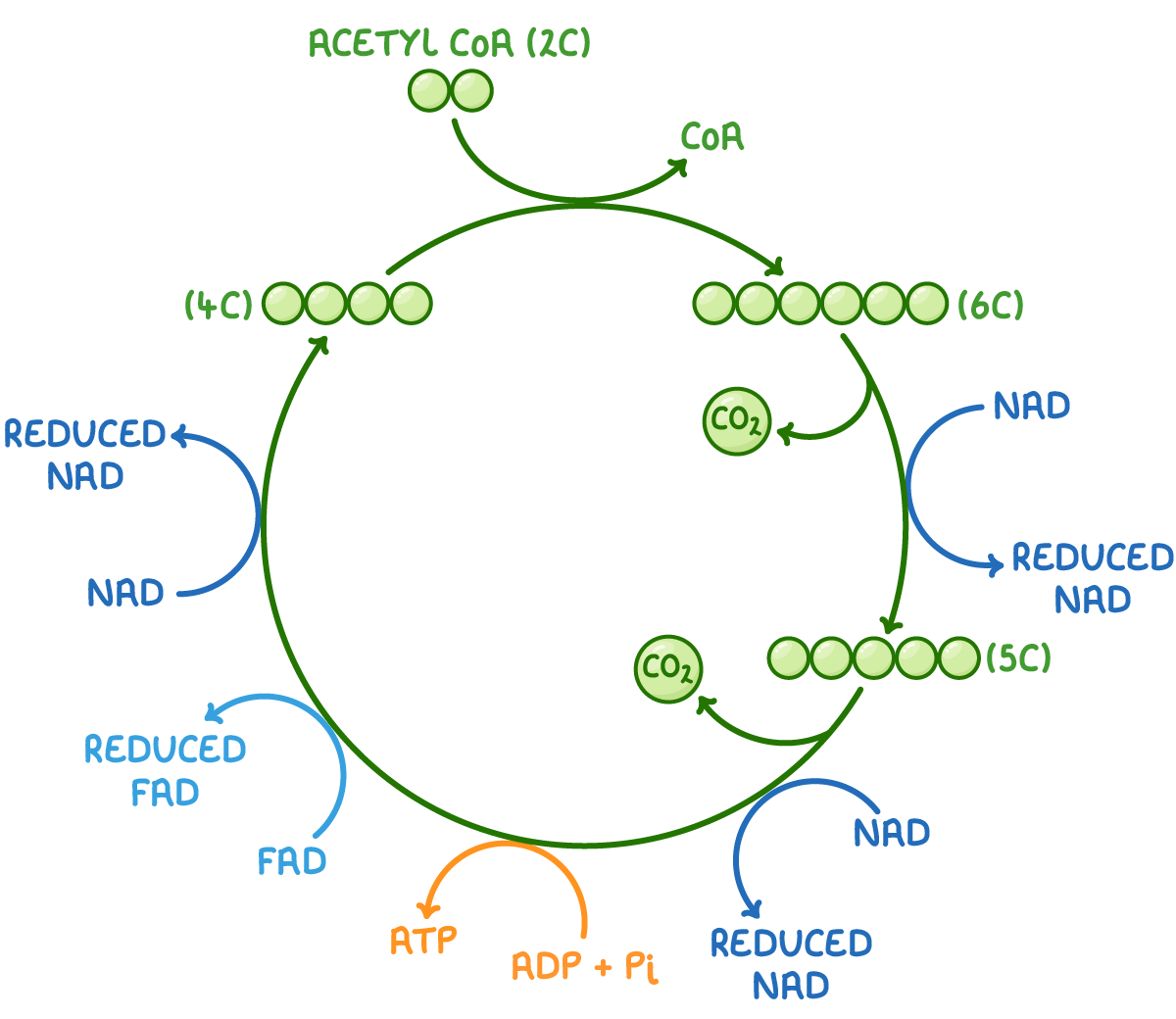Krebs Cycle
This lesson covers:
- Where the Krebs cycle occurs
- The main steps of the Krebs cycle
- The role of coenzymes like NAD and FAD
- The importance of the Krebs cycle
Introduction to the Krebs cycle
The Krebs cycle, also known as the citric acid cycle, is a stage of aerobic respiration that follows glycolysis and the link reaction. It takes place in the mitochondrial matrix.
It processes acetyl CoA to prepare substrates for the final stage of aerobic respiration (oxidative phosphorylation).
For each molecule of acetyl CoA, the Krebs cycle produces:
- Two molecules of carbon dioxide as a by-product.
- The electron carriers reduced NAD and reduced FAD, which are needed for oxidative phosphorylation.
- One molecule of ATP through substrate-level phosphorylation.
The main steps of the Krebs cycle

The Krebs cycle involves a sequence of enzymatic reactions:
- The two-carbon (2C) acetyl CoA merges with a 4C molecule to create a 6C molecule.
- The 6C molecule is decarboxylated, releasing two molecules of carbon dioxide.
- The 6C molecule is also dehydrogenated (oxidised), releasing hydrogens that reduce NAD and FAD.
- For each acetyl CoA that enters the cycle, one ATP (or GTP in some organisms) is synthesised directly via substrate-level phosphorylation.
- The 4C molecule is regenerated for the next turn of the cycle.
The role of coenzymes
Coenzymes such as NAD and FAD, along with coenzyme A, have essential roles in the Krebs cycle.
NAD and FAD differ in how they are reduced:
- NAD acts as an oxidising agent, accepting an electron and a proton to form reduced NAD.
- FAD acts as an oxidising agent, accepting two protons and two electrons to form reduced FAD.
These reduced coenzymes later donate these gained electrons to the electron transport chain, facilitating the transfer of electrons that is crucial for the synthesis of ATP.
While NAD participates in all stages of respiration, FAD only accepts protons and electrons in the Krebs cycle.
Importance of the Krebs cycle
The Krebs cycle is essential for several reasons:
- It oxidises and breaks down large nutrients into smaller ones, like carbon dioxide, which can be removed as a waste product.
- It generates reduced NAD and reduced FAD, which carry protons and electrons into oxidative phosphorylation.
- It continually regenerates the 4C molecule to combine with acetyl CoA molecules.
- It provides a variety of intermediate compounds required for the biosynthesis of essential cellular components such as fatty acids, amino acids, and chlorophyll.